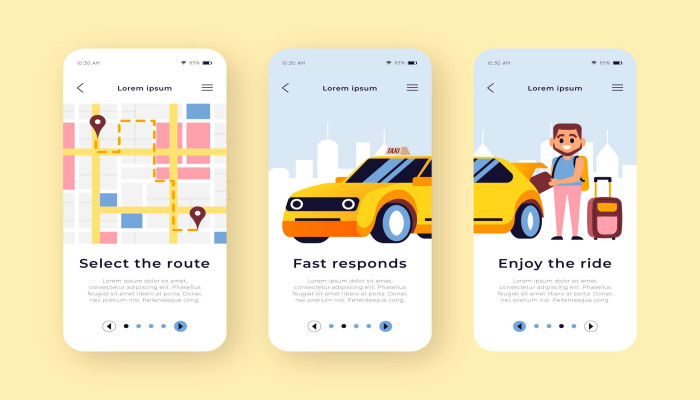 Launch apps instantly. Claim $200 credits on DigitalOcean
Launch apps instantly. Claim $200 credits on DigitalOcean
The Transformation of Urban Mobility: How Rideshare Apps Are Changing Transportation
Written by Jose Alejandro » Updated on: March 21st, 2024

In recent years, the advent of apps like Uber has sparked a revolution in urban transportation, reshaping the way people move around cities. These innovative platforms, such as Uber, Lyft, and others, have introduced a convenient and efficient alternative to traditional taxi services and public transportation. Let's explore how these apps are revolutionizing urban transportation.
Convenience and Accessibility
Rideshare apps have significantly enhanced the convenience of getting around in urban areas. With just a few taps on a smartphone, users can request a ride from anywhere at any time. Gone are the days of waiting in long lines for taxis or struggling to hail a cab on busy streets. Apps like Uber provide a seamless and hassle-free way to access transportation services.
Flexibility for Drivers
One of the key features of ride-sharing platforms is the flexibility they offer to drivers. Individuals can choose to work as independent contractors, driving whenever they want and for as long as they want. This flexibility is particularly appealing to part-time workers, students, and those looking to supplement their income. Rideshare applications have created new opportunities for people to earn money on their own terms.
Cost-Effectiveness
Rideshare apps often provide a more cost-effective option compared to traditional taxi services. The transparent pricing structure allows users to see the estimated fare upfront, eliminating the uncertainty associated with metered taxis. Additionally, ride-sharing platforms frequently offer promotional discounts, referral bonuses, and loyalty rewards, making transportation even more affordable for users.
Improved Safety Features
Safety is a top priority for rideshare companies, and they have implemented various features to ensure the well-being of both passengers and drivers. For example, users can track their rides in real-time using GPS technology, share their trip details with friends or family, and contact emergency services directly from the app if needed. Drivers undergo background checks and vehicle inspections to ensure they meet safety standards.
Reduced Traffic Congestion
These apps have the potential to reduce traffic congestion in urban areas by providing shared ride options and encouraging carpooling. Pooling multiple passengers into one vehicle helps to optimize the use of existing infrastructure and reduce the number of cars on the road. This not only eases traffic congestion but also decreases carbon emissions and contributes to a cleaner environment.
Accessibility for All
Rideshare apps have made transportation more accessible to individuals with disabilities or limited mobility. Many rideshare companies offer options for wheelchair-accessible vehicles and allow users to request assistance or accommodations as needed. This inclusivity ensures that everyone, regardless of their physical abilities, can enjoy the benefits of rideshare services.
Future Innovations
As technology continues to evolve, rideshare companies are exploring new innovations to further enhance urban transportation. This includes advancements in autonomous vehicles, electric vehicles, and alternative modes of transportation such as bikes and scooters. These innovations have the potential to revolutionize urban mobility and create more sustainable transportation solutions for the future.
In conclusion, Apps like Uber have transformed urban transportation in profound ways, offering unparalleled convenience, flexibility, and affordability to users. With continued innovation and advancements, these platforms are poised to play an even greater role in shaping the future of mobility in cities around the world.
Copyright © 2024 IndiBlogHub.com Hosted on Digital Ocean









Post a Comment
To leave a comment, please Login or Register